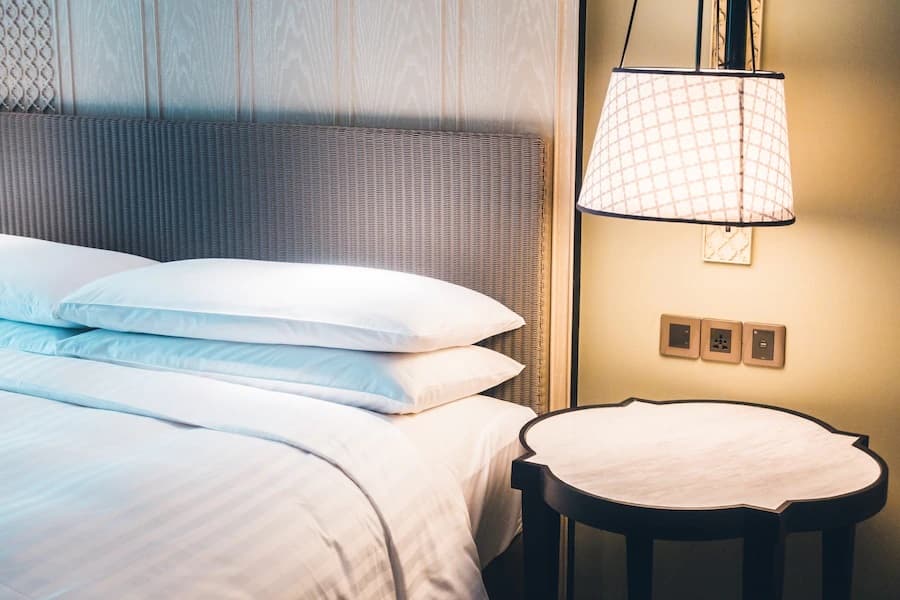Choosing the right hotel furniture involves more than just aesthetics. The key considerations for hotel furniture include durability, functionality, sustainability, and cost-effectiveness. These factors ensure that furniture withstands daily use while enhancing the guest experience.
For hotel owners and designers, understanding the hotel furniture selection criteria is crucial. From selecting the best materials for hotel furniture to considering space-saving hotel furniture ideas, every detail matters. Additionally, modern hotel furniture trends focus on comfort, sustainability, and long-term value, making it essential to invest in high-end hotel furniture essentials that align with evolving guest expectations.
This guide covers the four key considerations for hotel furniture selection, helping you make informed choices that improve your hotel’s style, functionality, and durability.
Table of Contents
Toggle- 1. Hotel Furniture Quality Standards: Durability & Material Selection
- 2. Functional Hotel Furniture Solutions: Comfort & Guest Experience
- 3. Sustainable Hotel Furniture Choices: Eco-Friendly Considerations
- 4. Cost-Effective Hotel Furniture Planning: Budget vs. Quality
- Hotel Furniture Maintenance Tips: Extending Lifespan
- The Advantages of Custom Luxury Hotel Furniture
- The Importance of Custom Hotel Furniture in Enhancing Guest Experience
- The Ultimate Guide to Finding Top Hotel Furniture Suppliers in Turkey
- Importance of High Quality Furniture in Hotels
- The Impact of Furniture Design on Hotel Guest Experience
- High Quality Furniture in Hotels: Essential for Guests
- The Role of Furniture in Defining Hotel Aesthetics
- The Evolution of Hotel Furniture Design Over the Years
- How to Choose the Right Upholstery for Hotel Furniture
- The Impact of Furniture Design on Guest Experience in Hotels
- Hotel Furniture and Design: Enhancing the Guest Experience
- Premium Hotel Furniture in Turkey: Elevate Your Hotel’s Interior Design
- How Do Hotels Get Furniture in the Rooms | Hotel Solutions
- Hotel Furniture Concept | Perfect Products for Your Hotel
- Top 5 Benefits of Turkish Made Hotel Furniture
- What makes a good faux leather?
- Furnishing an Apartment: 6 Tips for Choosing the Best Furniture
- Types Of Hotel Furniture You Need
- Why Turkish Made Hotel Furniture is the Best Choice for Your Business
- What is fixed furniture?
- Maximizing Your Hotels ROI with High-Quality Furniture Solutions
- Benefits of Custom Made Furniture
- Hotel Furniture Buying Guide
- Where Do I Buy Hotel Furniture in Turkey?
- How to Make a Hotel Room Feel Like Home
- How Often Do Hotels Change Their Interiors?
- A Good Hotel Furniture Manufacturer
- 7 Signs Your that Hotel Needs Renovation
- What Factors Will Affect Hotel Furniture Prices?
- Should I Buy Laminate or Veneer Furniture?
- MDF Cutting Machine
- What are the Basic Furniture Required to Set Up a Hotel?
- What is Crib 5?
- Four Ways to Maintain Hotel Room Storage
- Characteristics of a Custom Hotel Furniture
- Popular Materials for Luxury Hotel Furniture Manufacture
- The Four Characteristics of a Hotel Furniture Design
- Hospitality Design Mistakes That Are Common
- Hotel Furniture Quality Control Checklist
- Things Your Hotel Furniture Manufacturer Should Provide
- Why we use 3D Renderings in Furniture Design
- Advantages of Custom Hotel Furnitures
- Important Questions to Ask a Potential Hotel Furniture Supplier
- What Are the Guides to Contract Furniture?
- Things to Consider When Choosing a Hotel Furniture Manufacturer
- Wood Veneers and Laminate Casegoods
- Wooden Furniture Care
- What Types Of Wood Are The Best For Your Luxury Sofa?
- Hotel Furniture Cushion Upholstery Care
- Leather Furniture Care; Maintaining Your Hotel Furniture
- Ten Tips for Hotel Lobby Design
- Starland Hotel Cameroon
- Hotel Furniture Turkey
- The Best Hotel Furniture Suppliers
- Hotel Furniture Manufacturers in Turkey
- Four Mistakes While Buying a Restaurant Furniture in Turkey 2021
- Selecting Booth and Sofa Seating Made in Turkey
- 10 Restaurant And Cafe Furniture Ideas From Turkey
- Five Most important Materials in Hotel Furniture Industry
- Hotel Renovations: Luxury Hospitality Furnishings made in Turkey
- How to Maintain Hotel Furniture for 10+ Years
- Commercial VS Residential Furniture Made in Turkey
- Hotel Furniture Manufacturing Industry in Turkey
1. Hotel Furniture Quality Standards: Durability & Material Selection
Durability is one of the most critical key considerations for hotel furniture. Since hotel furniture is exposed to high foot traffic, choosing durable hotel furniture options ensures longevity while reducing maintenance costs.
Best Materials for Hotel Furniture
Hardwood – Highly durable and ideal for luxury hotel furniture considerations.
Metal Frames – Provide structural strength and enhance functional hotel furniture solutions.
High-Quality Upholstery – Stain-resistant fabrics and leather offer durability.
Reinforced Glass & Marble – Common in stylish hotel furniture designs, enhancing aesthetics.
To meet hospitality furniture durability factors, investing in custom hotel furniture design that incorporates long-lasting materials is a smart strategy.
2. Functional Hotel Furniture Solutions: Comfort & Guest Experience
A well-designed hotel space requires functional hotel furniture solutions that enhance guest comfort. Poorly planned layouts can lead to inefficiencies and negative guest experiences.
Essential Factors for Hotel Furniture Functionality
Comfortable Hotel Furniture Features – Ergonomic seating and well-cushioned beds improve guest satisfaction.
Space Optimization – Space-saving hotel furniture ideas help maximize room capacity.
Multi-Purpose Pieces – Foldable desks and modular sofas improve usability.
Guest-Friendly Design – Nightstands, workspaces, and seating areas should be easily accessible.
Selecting ergonomic hotel furniture choices ensures that guests enjoy a comfortable and stress-free stay.
3. Sustainable Hotel Furniture Choices: Eco-Friendly Considerations
Sustainability has become a top priority in modern hotel furniture trends. More hotels are adopting sustainable hotel furniture choices to meet environmental standards and attract eco-conscious travelers.
Eco-Friendly Materials for Hotel Furniture
Reclaimed Wood – Reduces waste while maintaining a classic look.
Bamboo – A rapidly renewable material used in high-end hotel furniture essentials.
Recycled Metal – Enhances durability and contributes to sustainable practices.
Low-VOC Finishes – Minimizes harmful chemical emissions in enclosed spaces.
By incorporating cost-effective hotel furniture planning with sustainable solutions, hotels can reduce environmental impact without compromising quality.
4. Cost-Effective Hotel Furniture Planning: Budget vs. Quality
While high-quality furniture is essential, maintaining a budget is equally important. Effective cost-effective hotel furniture planning ensures a balance between quality and affordability.
Tips for Budget-Friendly Hotel Furniture Selection
Prioritize Essential Pieces – Focus on key items like beds, seating, and workspaces.
Invest in Long-Lasting Materials – Choosing durable hotel furniture options prevents frequent replacements.
Customize Where Necessary – Custom hotel furniture design ensures a tailored fit without unnecessary expenses.
Look for Bulk Purchase Discounts – Buying in bulk from hotel furniture suppliers can reduce overall costs.
Balancing best furniture for hotel guest rooms with long-term savings leads to a smart investment.
Hotel Furniture Maintenance Tips: Extending Lifespan
Regular maintenance keeps hotel furniture quality standards high while minimizing repair costs.
Best Practices for Hotel Furniture Care
Use Protective Coatings – Helps prevent stains and scratches.
Regular Cleaning – Proper maintenance extends the life of essential factors for hotel furniture.
Inspect for Wear & Tear – Identifying issues early prevents costly replacements.
Choose Easy-to-Clean Materials – Leather and stain-resistant fabrics reduce upkeep efforts.
A proactive approach to hotel furniture maintenance tips ensures that furniture stays in excellent condition for years.



